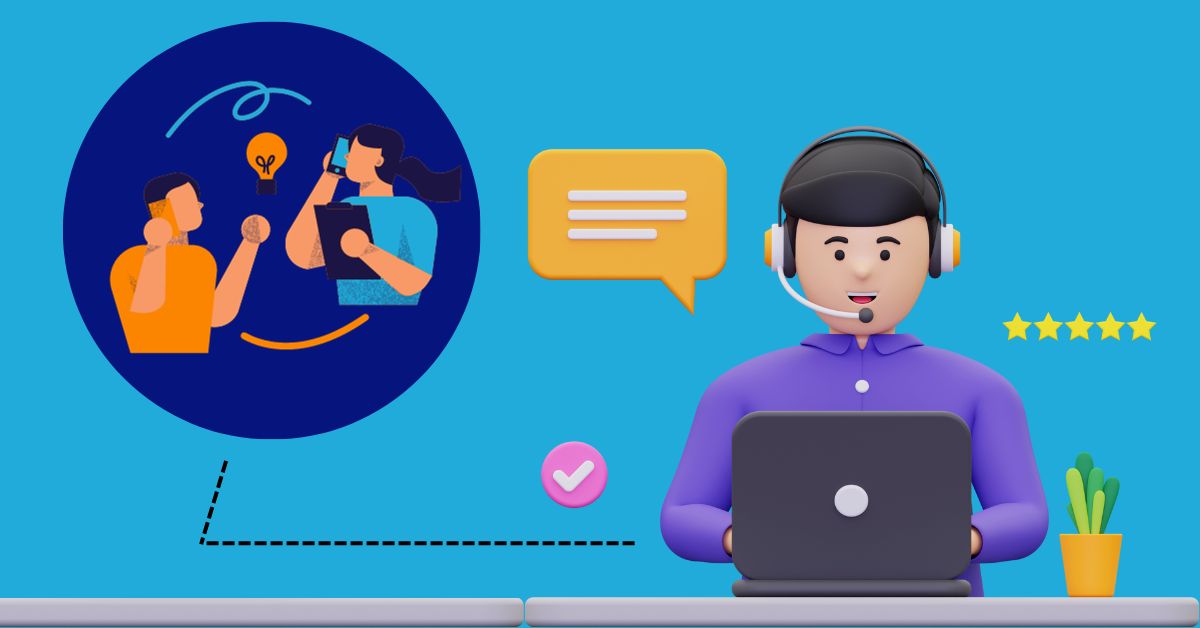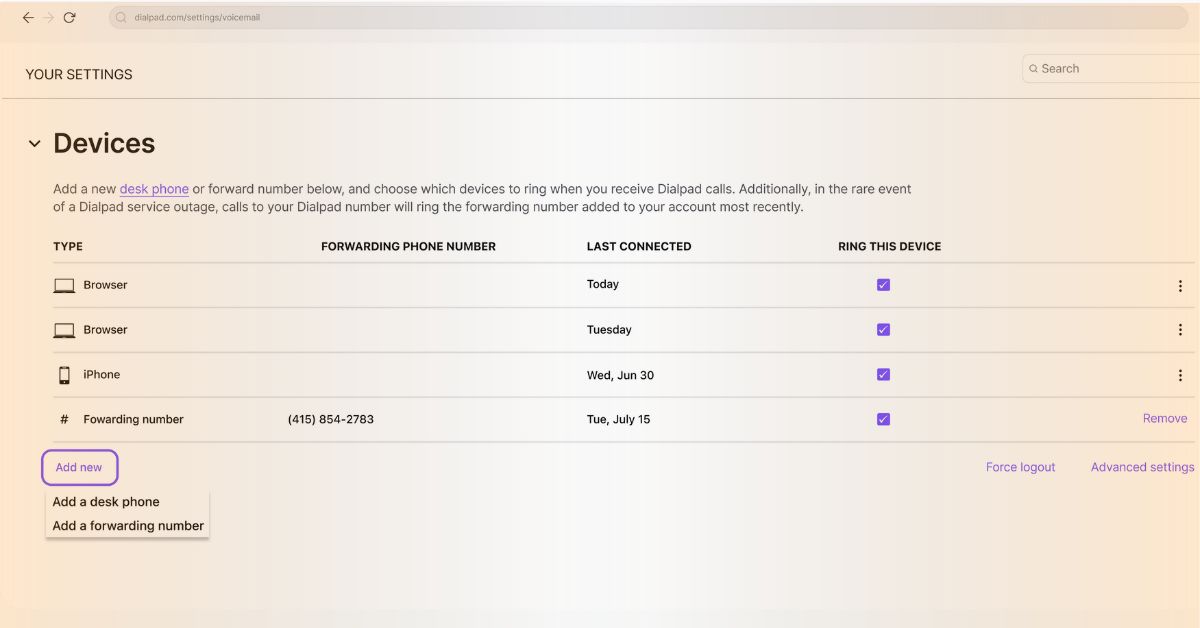Customers find few things as frustrating as encountering constant busy signals or endless call transfers between departments. The solution however, is simple. Just forward your business calls from your landline to your cell phone or any preferred number.
Even better, if you’re using a virtual phone number, setting up call forwarding is simpler. With a reliable business phone system or a Unified Communications as a Service (UCaaS) platform, you can easily configure this in just a few clicks, no technical support required.
In this blog post, we will learn how to do call forwarding efficiently. We will cover the benefits of call forwarding, how to set it up, and some tips on how to use it proactively. So, let’s cut to the chase and discover the simplicity behind this sophisticated tool.
Traditional Call Forwarding Methods

Efficient call forwarding has been a go-to tool in the communication toolbox for ages, serving both businesses and individuals needing constant connectivity beyond a fixed location.
On the other hand, traditional call forwarding is simple: it reroutes incoming calls to another number, making sure no calls slip through the cracks. The types of modern call redirection methods include –
- Manual Forwarding: This approach involves users dialing a specific code like *72, followed by the designated forwarding number. This will activate the call-forwarding feature to send the caller directly to that number.
- Remote Access Forwarding: A more advanced method provides remote control over call forwarding settings via a centralised system, giving flexibility beyond the primary phone.
- Busy/No-Answer Forwarding: Redirecting calls to an alternate number if the primary line is busy or after a preset number of rings helps prevent missed connections.
- Time-of-Day Forwarding: Automatically directing calls to different numbers based on specific time frames makes way for round-the-clock availability.
The Evolution of Call Forwarding

Call forwarding has come a long way since its inception. Back in the day, it was a simple feature that lets you divert incoming calls to another number. But as technology marched forward, advanced call forwarding underwent a remarkable transformation.
Advanced call forwarding methods now include sophisticated systems capable of intelligently routing calls based on various factors like caller identity, time, or current availability.
Nowadays, seamless communication solutions reign supreme. It’s all about keeping the conversation flowing without a glitch or hiccup, regardless of where you are. Businesses, in particular, prioritise these systems to avoid missed opportunities.
Wondering how to do call forwarding? It’s simple. Most devices or services offer a user-friendly interface for activating it. Input the desired forwarding number, and presto, you’re connected wherever you go.
Benefits of Modern Call Forwarding

Modern call forwarding brings forth a range of advantages, transforming how calls are handled using cutting-edge call forwarding technology. One key benefit is streamlined call management, which reduces missed connections and disruptions by swiftly directing calls to their intended recipients.
Enhanced call routing keeps individuals and businesses connected at all times, irrespective of their location. It also helps businesses reduce costs associated with missed calls or investing in multiple phone lines, as calls can be easily directed to appropriate personnel or departments.
Learning how to do call forwarding opens the door to these benefits, keeping you reachable at all times and making sure you never miss an important call.
Setting Up Call Forwarding
Regarding digital communication optimisation, getting call forwarding is the way to go! The process is simple, ensuring your calls reach their destination, wherever you are.
-
Steps to Setup Call Forwarding
Head to your phone settings or your service provider’s platform to start call forwarding. Look for the call settings section, which usually features the call forwarding option. Select this and input the preferred forwarding number.
Some services may ask for additional preferences, like when to activate call forwarding—whether it is always or under specific conditions, such as when you’re busy or unreachable.
Integrating Call Forwarding into Business Operations
Bringing personalised call forwarding options into your business operations is wise, as it can tailor call routing to fit your business flow and maintain constant connectivity.
Start by accessing your phone settings or your provider’s platform. Look for call forwarding and pick options that match your workflow. This could mean forwarding calls based on schedules, caller IDs, or departmental needs.
Common Mistakes to Avoid
When it comes to AI-integrated call forwarding, learning and steering clear of common mistakes can make a significant difference in optimising your communication system.
-
Test Call Forwarding Setup
One common pitfall is neglecting to test your call forwarding setup thoroughly. Failure to conduct test calls or simulations might result in misdirected calls or overlooked settings.
-
Customise AI to Your Business Demands
Another frequent misstep is neglecting to customise AI-integrated call forwarding to your business needs. Overlooking this can result in delayed forwarding and frustrated clients.
-
Updating Settings
Also, assuming that AI does all the work is another mistake. Regularly reviewing and updating settings is crucial to adapt to evolving business dynamics.
Regarding user-friendly call forwarding settings, the mistake lies in complexity. Keep it simple; otherwise, users might struggle to optimise their call-forwarding preferences.
Tips for Troubleshooting

Following a few simple tips can save the day when resolving call-forwarding glitches. Start by making sure that your call forwarding settings are correctly configured. Double-check the numbers and settings to rule out any errors causing the problem.
Another helpful tip is to check for any service provider issues. Sometimes, technical hiccups at the provider’s end disrupt call forwarding. Contact your provider to verify if everything is running smoothly.
For future trends in call redirection, expect more advancements in AI-driven call routing. This includes smarter algorithms that anticipate user preferences and refine call forwarding based on context and behaviour patterns.
Bottom Line
As you navigate this essential feature, remember the importance of a reliable partner like VoIPElements in Melbourne, VIC. Their expertise in VoIP solutions aligns perfectly with modern call forwarding needs, providing optimal connectivity and efficiency.
With VoIPElements, mastering how to do call forwarding becomes simpler, empowering you to stay connected effortlessly, no matter where business takes you.
FAQs
Q. Is call forwarding available on all mobile devices?
- Yes, call forwarding is a standard feature available on most mobile devices. However, the specific steps to activate it might vary slightly depending on the device and its operating system.
Q. Can I customise call forwarding for different types of calls?
- Yes, many call forwarding options allow customisation based on various conditions like specific numbers, time of day, or caller ID.


